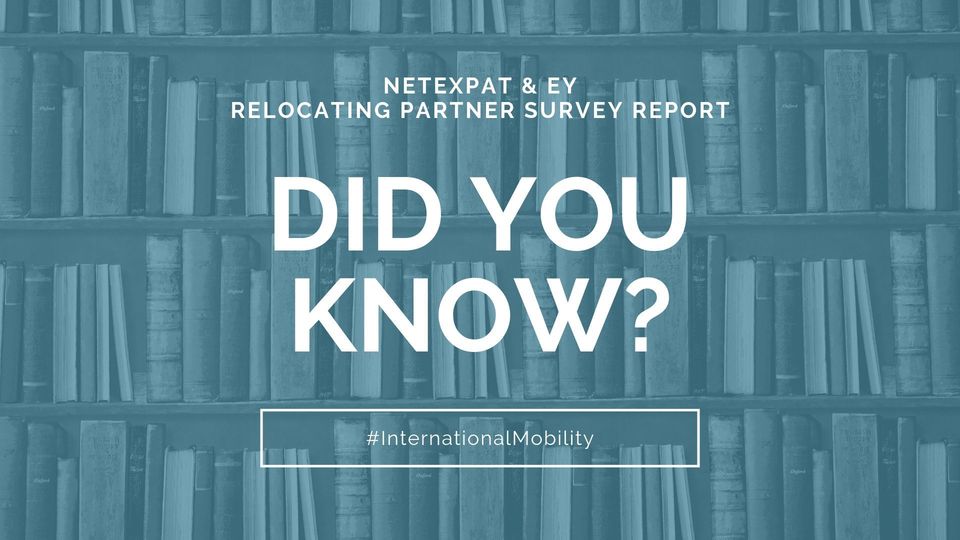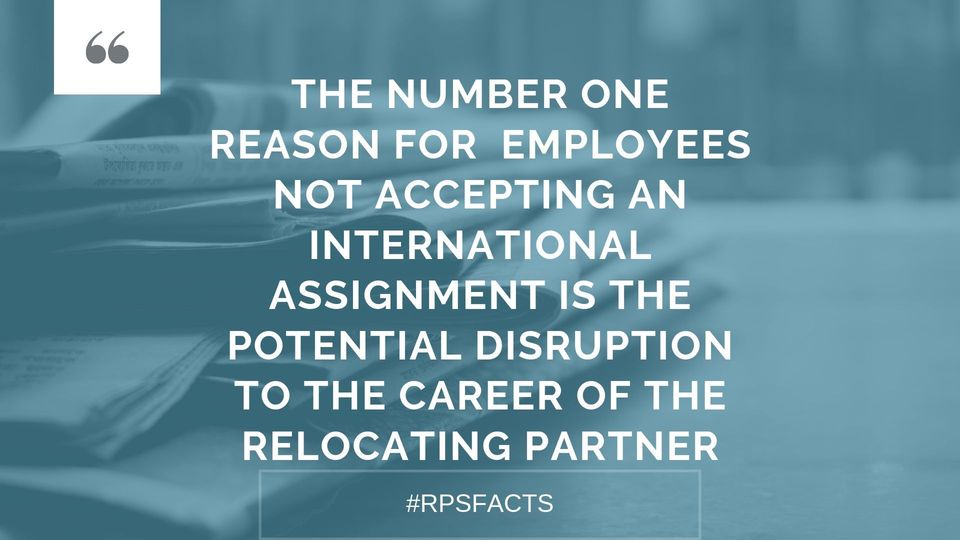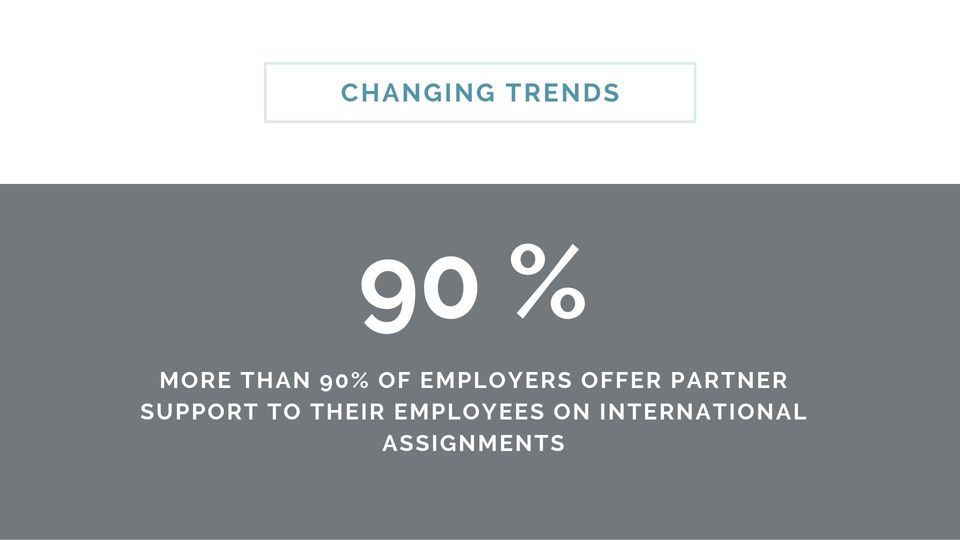RPS FACTS : RESHAPING PERSPECTIVE
NetExpat Team • August 14, 2019

The Relocating Partner Survey is the most comprehensive benchmark survey ever conducted related to the spouses and partners of transferees.
The data from this historical survey provides significant insight on trends happening now and lessons to be learned when implementing new global mobility and talent management policies. Read on to learn more.
Modern couples are highly sensitive to the career opportunities available to their spouse or partner. When it comes to a relocation opportunity, this translates directly to a simple question: What will my employer provide as support for my partner?
The resounding message brought forth from the Relocating Partner Survey is loud and clear: the top reason for refusal of an international assignment is the disruption of the partner's career.
A significant number of employers who participated in the Relocating Partner Survey reported that there was a distinct correlation between offering support to an assignee's partner and an increase in the assignee's performance.
With the top reason for a failed assignment being an unhappy partner, improvement in the overall employee experience can have a huge impact on not only the assignment, but an organization's talent management strategy.
The findings from the 2018 Relocating Partner Survey are helping corporations around the globe benchmark their own global mobility and talent management strategies and understand the trends in today's ever-changing business environment. Interested in learning more? Download the full report today.
Request a Copy of the RPS Final report
Share this post

Tracy brings her passion for people, coaching, and consultative sales to NetExpat. With a background in business psychology and years of experience guiding individuals and teams, she thrives on building client relationships and supporting growth. Tracy values NetExpat’s culture of equality, collaboration, and respect, where every voice matters. Motivated by making a genuine impact, she envisions global mobility becoming increasingly diverse, strategic, and human‑centered in the years ahead.

At NetExpat, we believe that global mobility is more than logistics, it’s about people, families, and the human experience of moving across borders. That’s why we launched the Global Care Awards to honor the organizations who go above and beyond to support mobile talent with care, inclusion, and strategic vision.

What if your AI tools are unintentionally costing you great hires, damaging team morale, or shrinking your global reach? Cultural bias in AI happens when technology reflects the norms and assumptions of the culture it was built in. That means even the smartest algorithms can struggle to interpret behaviors or communication styles that differ from the data they were designed and trained on. The result? Missed opportunities, disengaged teams, and tech that undermines—rather than supports—your global strategy. In today’s interconnected workplaces, understanding and addressing cultural biases is ethical, but it’s also about business resilience and growth. This blog post offers a clear, practical overview of where these biases show up and how you can build AI systems that truly support diverse teams and markets, along with business sustainability and growth.

Today’s global hiring landscape is complex. A candidate’s ability to succeed isn’t just about their qualifications; it’s about whether they can thrive in a new geographic, cultural, and/or corporate environment. Too often, companies assume preparing for success starts at the onboarding phase, but, in reality, the most crucial hiring decisions happen much earlier—during the pre-decision phase. Why does this matter? Because hiring the right talent isn’t just about filling a role; it’s about ensuring long-term success. Without assessing readiness factors early, companies risk costly misplacements, cultural mismatches, and logistical hurdles that could have been avoided. This is where internal mobility and talent acquisition teams can align and collaborate to transform hiring into a truly strategic process – one that ensures the right talent is selected, supported, and set up for success.

When organizations outsource business functions to another country—whether it’s accounting, customer service, or tech support—they’re often hoping for a streamlined, cost-effective solution. But when intercultural differences aren’t factored into the strategy, the shift often results in the exact opposite: misaligned expectations, breakdowns in communication, and friction across internal teams. Time is lost, along with trust, satisfaction ratings, and even clients. Too often, stakeholders don’t even know why. When internal teams find themselves working across cultures, misunderstandings are common. The definition of “good service” in one country may feel intrusive or inadequate in another. Perceptions of hierarchy and respect vary widely, leading to unintentional offenses. And communication styles are so nuanced that even simple messages can be misread—causing delays, confusion, and strained relationships. Internally, employee engagement and productivity suffer. Clients may notice the shift too—especially in customer-facing functions. Intercultural agility is the solution.

Leadership wants metrics, but they also need clarity. When you see a business need or opportunity, building the right business case with data is the way to give that to them. It’s also the best way for you to get buy-in. This blog post will discuss how to use data to strengthen business cases and the role of business storytelling in securing buy-in.

International relocations are a big adjustment for employees, but they can be an even bigger adjustment for their accompanying spouses or partners. This is especially true if they were a part of a dual income household in their country of origin. While organizations often focus on logistical support for the employee, the success of an international assignment hinges equally on the well-being of the entire family. If a relocating partner struggles to integrate, it can have negative impacts on the partner’s state of mind, the couple’s relationship, the employee’s ability to focus on their new role, and both assignment and organizational objectives.











